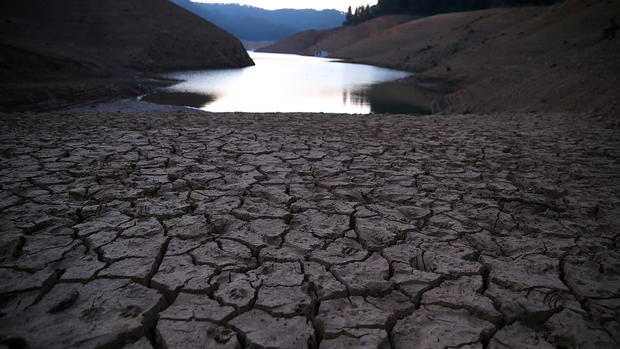Oroville Dam's emergency spillway may be used to handle California runoff
OROVILLE, Calif. -- Water could pour over an emergency spillway at Lake Oroville for the first time ever, a last-ditch alternative that California officials said they had been hoping to avoid.
The California Department of Water Resources said that the reservoir’s emergency spillway likely will be used, perhaps, as soon as early Saturday.
Earlier this week, chunks of concrete flew off the nearly mile-long spillway, creating a 200-foot-long, 30-foot-deep hole. Engineers don’t know what caused the cave-in that is expected to keep growing until it reaches bedrock.
The department does not expect the discharge from the reservoir to exceed the capacity of any channel downstream as the water flows through the Feather River, into the Sacramento River and on to the San Francisco Bay.
Officials say Oroville Dam itself is sound and there is no imminent threat to the public.
“The integrity of the dam is not jeopardized in any way because the problem is with the spillway and not the dam,” department spokesman Eric See said.
Located about 150 miles northeast of San Francisco, Oroville Lake is one of the largest man-made lakes in California and the 770-foot-tall Oroville Dam is the nation’s tallest.
The lake is a central piece of California’s government-run water delivery network, supplying water for agriculture in the Central Valley and residents and businesses in Southern California.
After years of drought Northern California has endured several months of exceptionally wet weather. Oroville and other lakes are brimming and have begun releasing water to make room for more runoff.
The initial damage to the spillway occurred Tuesday, about 3,000 feet downstream from where water enters from the lake. The water flowing out of the hole quickly turned brown with mud as it consumed trees and soil before rejoining the main channel below in a massive confluence wave that sent up clouds of mist in the tree-lined canyon.
The lake was rising at a half-foot per hour Thursday as the inflow peaked at 121,000 cubic feet per second, officials said at a news conference about a mile from the spillway. They were releasing water at about 40,000 cubic feet per second.
That’s not enough to keep the lake from continuing to rise, officials said, but is expected to keep them from having to use a nearby emergency spillway that has never been used since the dam was dedicated in 1968.
As a backup plan, state workers and contractors were pulling out trees and bushes by the roots from the emergency spillway to keep them from floating downstream.
If the department can’t keep using the eroded concrete spillway, Lake Oroville would naturally flow over an ungated concrete crest into the mostly unlined emergency spillway once the reservoir reaches 901 feet elevation. The reservoir came within a foot of flowing over in January 1997.
Meanwhile, workers at a state hatchery for California’s native Chinook salmon loaded up all the millions of baby salmon into tanker trucks Thursday afternoon to try to save them from the mud, concrete chunks and other debris coming from the crumbling spillway.
The hatchery, on the Feather River, is vital to the survival of chinook salmon, whose numbers have dwindled during the drought. Hatchery managers planned to take the young salmon to a holding point they hoped was far enough away.
The department continued to operate hydraulic power plants both at the base of Oroville Dam and downstream, Thomas said, with contingency plans to protect them. If they have to be shut down, which is not anticipated, he said state power managers would draw from other sources on the interconnected electrical grid.




